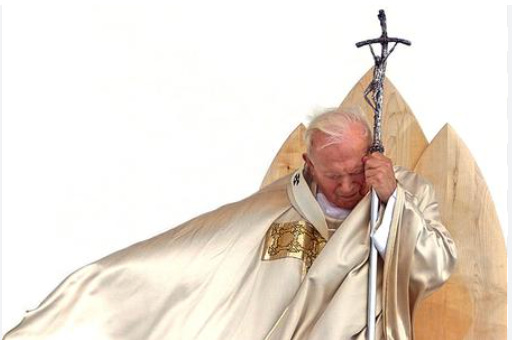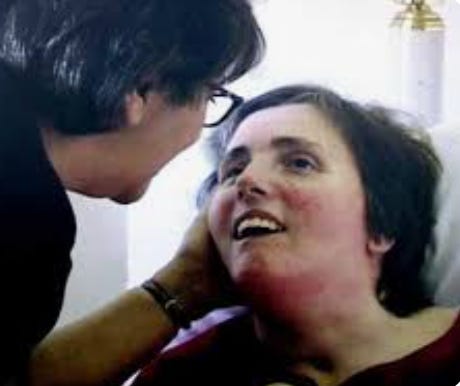The Redemptive Power of Suffering: Pope St John Paul II Against the Culture of Death
It was with this hope that Pope St John Paul II became a courageous witness who suffered in a world that told him he didn’t need to, who told him that there was an easier way.
I started watching “Blue Lights'“ following Sean Walsh’s recommendation. It’s a Police drama set in contemporary Northern Ireland, with echoes of a world I recall from childhood. My family are, to this day, based in Dundalk, Louth. Border territory and once notorious IRA stronghold. As an English sounding Catholic named O’Neill, crossing the border was always unsettling to my mother, for reasons I didn’t understand.
Familiar to me, and with superb acting, I stuck with it. A few episodes in and our intrepid “peelers” have to park attempts to shut down criminal gangs to answer a call from an address where a body has been found.
Whodunnit? A masked intruder? A Jealous ex lover? A serial killer with a gruesome signature style?
No. A homosexual man who ‘mercy’ killed his ‘husband’. *Cue the violins*.
The whole episode was portrayed as you might expect in an age pushing for state sponsored killing. The dead man had lung cancer and was having a terrible time with it. The surviving homosexual sex partner couldn’t bear to see his once vibrant lover suffer, and so (compassionately you understand) killed him.
Having watched this series to the end, what I initially thought was a predictable need by media luvvies to elicit sympathy for the downtrodden LGBTQIA+ (G) ‘community’, I now think was a deliberate choice to align the emptiness and sterility of same sex relationships, built on the sand of pleasure seeking and not the rock of family formation, with the pride of ‘mercy killing’. After all, when pleasure is gone, and pleasure’s all ya got…what’s the point?
Today we celebrate the feast of Pope St John Paul II whose pontificate was marked by suffering and whose theological reflections on its redemptive value were committed to text in the Apostolic Letter Salvifici Doloros.
Pope St John Paul II’s final weeks served as a symbolic homily on the dignity of life, suffering, and death. His suffering was juxtaposed at the time with that of Terry Schiavo, a woman who relied on a feeding tube for survival and whose story played out in International media as a landmark ‘right-to-die’ case.
Terry’s brother, who along with his family, fought to keep her alive, commented in 2024:
“…decades of discrimination against people with brain injuries have taken a toll. If I had to guess, a nationwide survey would expose a culture that believes the brain injured and the profoundly disabled no longer retain their God-given human dignity.
Every day, I read offensive comments directed at my sister Terri Schiavo, the elderly, and others who are “needlessly suffering” and are vilified as “financial burdens.” We have reached the point where ending their life is rationalised for almost any reason under the pretence of “compassion,” just as it was for Terri.”
When human beings are reduced to their utility, this is the inevitable consequence.
Terry Schiavo and Pope St John Paul II died within weeks of one another in 2005 after Terry suffered a prolonged death by enforced dehydration against the wishes of her family.
Her brother went on to speak of the events which ultimately led to the death of his sister. Among them the testimony of a Catholic priest whose statement of grave error formed part of the case which eventually won the right to remove his sister’s feeding tubes.
Keep reading with a 7-day free trial
Subscribe to Catholic Unscripted to keep reading this post and get 7 days of free access to the full post archives.




